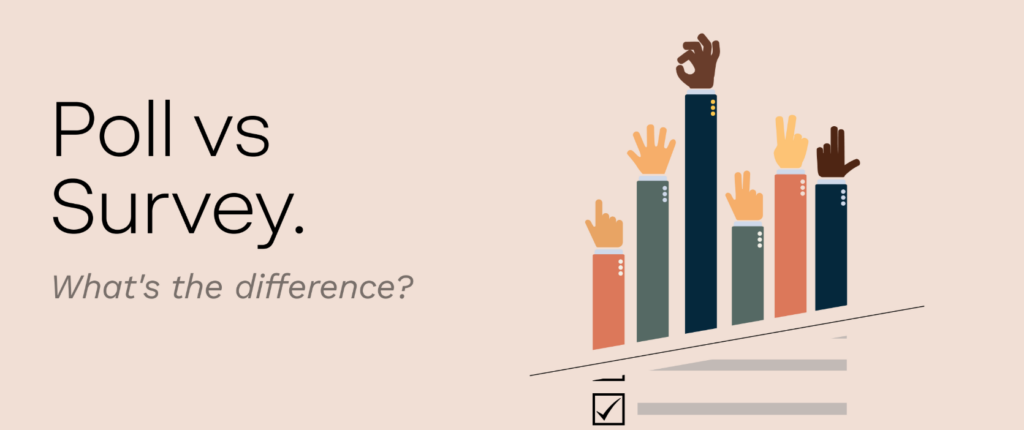Customer feedback is a valuable tool for businesses aiming to improve their products, services, and overall customer experience. One of the most effective ways to gather this feedback is through surveys and polls. These methods allow businesses to directly interact with their customers, learn about their preferences, and identify areas for improvement. In this article, we will explore the importance of customer feedback, the difference between surveys and polls, and how businesses can effectively use these tools.
The Importance of Customer Feedback
Customer feedback provides businesses with a wealth of information about how their products or services are performing in the real world. When customers share their opinions, they help companies understand what is working well and what needs adjustment. This information is crucial for a variety of reasons:
- Improving Products and Services: Feedback helps businesses identify flaws or gaps in their offerings, which can then be addressed to better meet customer needs.
- Enhancing Customer Experience: By listening to customer suggestions and complaints, businesses can make adjustments to create a more satisfying experience.
- Building Loyalty: When customers see that their feedback is valued and acted upon, they are more likely to feel loyal to the brand and continue doing business with them.
- Increasing Engagement: Feedback channels such as surveys and polls provide an opportunity for customers to feel involved and engaged with the company.
Surveys vs. Polls: What’s the Difference?
Surveys and polls are both popular methods for collecting customer feedback, but they differ in terms of format and depth. Understanding the distinction between the two can help businesses decide which approach is best for their needs.
Surveys
Surveys are more comprehensive and often involve a series of questions that cover a wide range of topics. They typically take longer for customers to complete and may include multiple types of questions such as multiple choice, open-ended, and rating scale items. Surveys are ideal for gathering in-depth insights on customer satisfaction, product quality, and service experience.
Examples of survey questions:
- On a scale from 1 to 10, how satisfied are you with our product?
- What features would you like to see in future versions of our product?
- How would you rate the customer support you received during your recent interaction?
Surveys are valuable because they allow businesses to gather detailed information that can guide strategic decisions. However, because of their length and complexity, surveys tend to have lower response rates unless they are carefully designed.
Polls
Polls, on the other hand, are much shorter and simpler. They usually consist of just one or two questions and are easy to answer quickly. Polls are often used to gauge public opinion or collect feedback on a specific issue. Because of their brevity, polls tend to have higher response rates compared to surveys.
Examples of poll questions:
- Do you prefer online or in-store shopping?
- Would you recommend our product to a friend? (Yes/No)
- Which color do you prefer for our new product? (Red/Blue/Green)
Polls are great for gathering quick, real-time data and can be used frequently to track customer preferences or reactions. However, they offer less detailed information than surveys.
How to Use Surveys and Polls Effectively
For businesses to make the most of surveys and polls, they need to implement these tools thoughtfully. Below are some best practices to follow:
1. Keep It Short and Simple
Whether you’re designing a survey or poll, it’s essential to keep the questions clear and concise. Customers are more likely to respond if they can easily understand the questions and provide their answers without feeling overwhelmed.
- For surveys: Limit the number of questions to avoid survey fatigue. A 5-10 question survey is ideal.
- For polls: Keep it to a single question with clear, easy-to-understand options.
2. Ask the Right Questions
The quality of the feedback you receive depends largely on the questions you ask. Make sure your questions are specific, relevant, and unbiased. Avoid asking leading questions that may skew the results.
- Example of a leading question: “Don’t you think our customer service is excellent?”
- Better alternative: “How would you rate your experience with our customer service?”
3. Use Multiple Channels
To reach as many customers as possible, consider using multiple channels in order to distribute your surveys and polls. You can send them through email, social media, as well as directly on your website or app.
- For surveys: Email campaigns or in-app surveys work well for more detailed feedback.
- For polls: Social media platforms such as Instagram or Twitter are ideal for quick, one-question polls.
4. Offer Incentives
To encourage participation, consider offering incentives for completing surveys or polls. Rewards can include discounts, free products, and also entry into a giveaway. Incentives not only increase response rates but also make customers feel appreciated for taking the time to provide feedback.
5. Analyze and Act on Feedback
Once you’ve collected feedback, take the time to analyze the responses and identify trends. Look for common themes, both positive and negative, that can guide your business decisions.
- For surveys: Focus on areas where customers indicate dissatisfaction or suggest improvements.
- For polls: Look for patterns in preferences or opinions that can inform your marketing strategies.
Most importantly, ensure that you act on the feedback you receive. Customers will appreciate knowing that their opinions have been taken seriously, which can help build trust and loyalty.
Conclusion

Surveys and polls are indeed powerful tools for gathering customer feedback that can guide businesses toward improving their products, services, and customer experience. By understanding the differences between surveys and polls, using them effectively, as well as acting on the feedback provided, businesses can strengthen their relationship with customers and achieve long-term success.
Frequently Asked Questions (FAQs)
1. What is the difference between surveys and polls?
Surveys are comprehensive questionnaires that gather detailed feedback, while polls are short, single-question tools designed for quick responses.
2. Why is customer feedback important for businesses?
Customer feedback helps businesses improve products, enhance services, build customer loyalty, and make informed decisions in order to stay competitive.
3. How can businesses increase survey response rates?
Businesses can increase response rates by keeping surveys short, asking clear and relevant questions, and offering incentives such as discounts or giveaways.
4. What are the best platforms for conducting polls?
Polls can be effectively conducted on social media platforms such as Instagram, Twitter, and Facebook, or via websites and apps.


